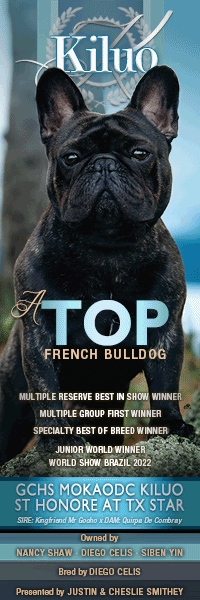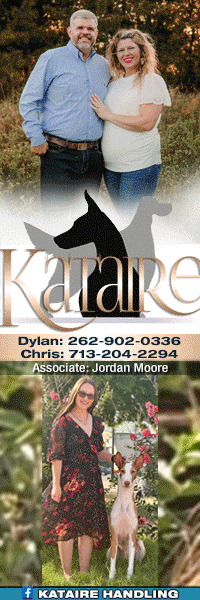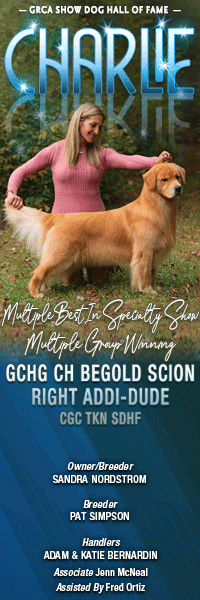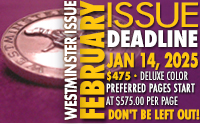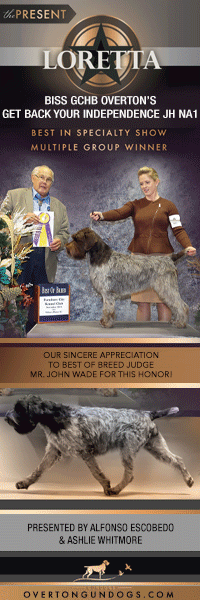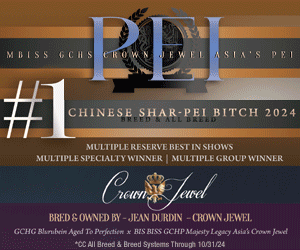From The CC Vault: Disparities
By Dr. Gareth Morgan-Jones
Originally published: April 2012
 Consider the following scenario. It could be any place, any time, with a little imagination. A series of large-entry dog shows is being held on four or five consecutive days. On the first, a number of Specialties are taking place, some independently at different locations in the same general vicinity, others as part of a cluster, or variously mixed in, a few as concurrent events, at the venue of three or four scheduled all-breed shows. In one particular breed, and maybe in some others, breeder-judges are passing on the exhibits the first three days, followed on the fourth by someone approved for all breeds. As could reasonably be expected, the Specialty draws by far the larger entry. There still remains that overt dichotomy which I have written about previously. There are some folks who will only show their dogs at such an event, where the games are played, irrespective. And they are the ones, of course, who have a high rate of success, who almost invariably get the bigger piece of the action and then, having got what they came for, skedaddle on home rather than suffer the indignity of participating in what they presumably view as the devalued all-breed dog show. That’s what the breed’s elitist aficionados do, make the rounds of the Specialties and largely forget the rest. Hey, do you want to think ‘politics’? Is this not now reaching a state of some notoriety? Then there are those who will hang on for one or two more days if there is a supported entry with a breeder-judge carrying broadly similar baggage on offer. By the last day the entry dwindles appreciably since the notion does the rounds that the all-breed-judge will either judge the dogs or put up the handlers. All this sound familiar?
Consider the following scenario. It could be any place, any time, with a little imagination. A series of large-entry dog shows is being held on four or five consecutive days. On the first, a number of Specialties are taking place, some independently at different locations in the same general vicinity, others as part of a cluster, or variously mixed in, a few as concurrent events, at the venue of three or four scheduled all-breed shows. In one particular breed, and maybe in some others, breeder-judges are passing on the exhibits the first three days, followed on the fourth by someone approved for all breeds. As could reasonably be expected, the Specialty draws by far the larger entry. There still remains that overt dichotomy which I have written about previously. There are some folks who will only show their dogs at such an event, where the games are played, irrespective. And they are the ones, of course, who have a high rate of success, who almost invariably get the bigger piece of the action and then, having got what they came for, skedaddle on home rather than suffer the indignity of participating in what they presumably view as the devalued all-breed dog show. That’s what the breed’s elitist aficionados do, make the rounds of the Specialties and largely forget the rest. Hey, do you want to think ‘politics’? Is this not now reaching a state of some notoriety? Then there are those who will hang on for one or two more days if there is a supported entry with a breeder-judge carrying broadly similar baggage on offer. By the last day the entry dwindles appreciably since the notion does the rounds that the all-breed-judge will either judge the dogs or put up the handlers. All this sound familiar?
So how about some of the results? Well now, let’s see. Quite a bit different every day is the best way of putting it. Allow me to throw out just a few specifics at random and mention in passing, out of interest, that I’m not necessarily making any, or some, or all, of this up! The Best in Sweepstakes doesn’t even place in its Regular class at the Specialty. The Specialty Winners Dog suffers the ignominious fate of going third in its class at the two subsequent Supported Entries and is not even entered the fourth day. A dog that was fourth in its class at the Specialty is awarded Winners at one of the subsequent exercises. To top it all off; how about a different Breed winner every day? Now several questions arise, which probably have only conjectural answers, when one sets about to analyze such a conundrum as this. Here is one. How well, or otherwise, is the task of evaluating the respective merits of breeding stock being achieved at many of our shows? Here is another. Are the wide disparities that one oftentimes witnesses an indication of some inherent weakness in the way we do things or do a variety of compromising factors on occasion enter into the equation and mess things up? Are breeder-judges, in particular, vulnerable to the temptation of allowing personal preferences to taint their ability to reach fully rational and valid decisions? Not to mention the who’s-at-the-other-end-of-the-lead element. There can be little doubt, as has been said many times, that manifest subjectivity often plays a significant role in a whole lot of our decision-making. But how often have you ended up asking yourself: surely it can’t be this absurdly subjective. Add to this various degrees of competence and you’ve surely got yourself something approaching an untenable, indefensible situation.
In the process of judging the purebred dog in conformation competition there always occurs some interplay between objectivism, that which is essentially external to active individual thought, feeling, instinct, intuition and emotion and what we refer to as the subjective element where sometimes excessive emphasis on personal predilection, preference and partiality kicks in. A judge oftentimes deals with certain mental intangibles like perceived beauty and may rely, at least to some degree, on that most mercurial of qualities; taste. There are seemingly always conflicts and contradictions. How we picture things in our head, the various strategies that we use to make sense of the visual information continually flooding the brain, will vary but this matter of visual cognition is, of course, of vital importance. One can only hope that the zigs become offset by the zags. As I have written about previously, on several occasions, giving priority to the external elements of cognition, the act of applying gathered knowledge cleanly and with utmost integrity, helps neutralize some of the baggage which judges oftentimes almost inevitably carry. In order to reach fully valid decisions, care has to be taken that those things which are peculiar to an individual are kept in check. There has to be some rhyme and reason in all of this, some solid ground. If there is not, the whole exercise is devalued and the sport suffers. Things have to make sense!
When conclusions reached as to respective merit of exhibits appear to lack the faculty of reasoning, when there is a hard-to-understand, wide disparity of opinion among judges, there is obviously always a cause for some concern. This sort of thing and type disparity appears to happen more in some breeds than in others and the reasons for same are, in some cases, readily apparent and can be, of course, various. In others they are not quite so obvious. So how do we go about attempting to determine that which is excessively and unreasonably subjective. Moreover, what degree and level of this is deemed acceptable? Or is it really just a wild crapshoot, free-for-all? Are, or should, all outcomes in this regard be at least somewhat predictable? Let us start by readily recognizing that no two judges will, nor indeed should, necessarily evaluate a dog in precisely the same way. This is not what we are really talking about here. Different judges focus on things variously, they might practice different emphasis and priorities, they will weigh the importance of features differently. All this is, of course, well within the realm of reason and within the sphere of our tradition. After all things would be very monotonous and uninteresting if the same dogs won all the marbles all the time. But there is a certain limit, there are surely boundaries. There are values to be safeguarded. Otherwise what’s the point of it all? There has to be that which is deemed a valid and acceptable decision within a particular context and that which is not. Otherwise why are AKC Executive Field Representatives wasting their time and effort conducting observations? It surely can’t all be an any-old-how, eeny, meeny, miny, moe, type process of elimination.
The main differences in level of judging competency is a direct reflection of the depth and validity of an individual’s grasp of what a dog of a given breed should look like, how it should be constructed, how it ought to move, what sort of temperament it should it have. How well aware is a person of a breed’s very essence clearly plays a pivotal role. And a whole lot of other finer details and nuances are involved. Added to this, the facility with which a judge approaches the task of effectively comparing. How clean and incisive is the methodology, the mental thought-process. How much knowledge is there and how readily is it translated into an ability to accurately discern and make cogent determinations as to respective merit. As has been said many times before, degree and extent of experience becomes a vital ingredient. Within all of this the subjective element has, ideally, to be kept to a minimum. Without a sound understanding of the essential elements of breed type and conformation requirements, in terms of make and shape, judging can and does become a meaningless exercise. And so we are, on occasion, exposed to these hard-to-explain, wide disparities of opinion. They happen sometimes when one is least expecting them. But then knowing the type of compromising baggage that some folks carry, and the varying degrees of judging ability out there, perhaps it isn’t all that surprising. In the larger scheme of things, the unseemly or unsatisfactory side is possibly but small potatoes and of little real overall consequence. So how should one go about trying to accommodate these shortcomings within the framework that is our sport and our own minds? Brush them under the proverbial carpet wherever and whenever we see them? How often have you heard someone express grave misgivings about decisions reached by judges? What is your inclination in this regard? Pay little attention and not let such sentiments negatively impact your enjoyment?
Short URL: https://caninechronicle.com/?p=255183
Comments are closed


